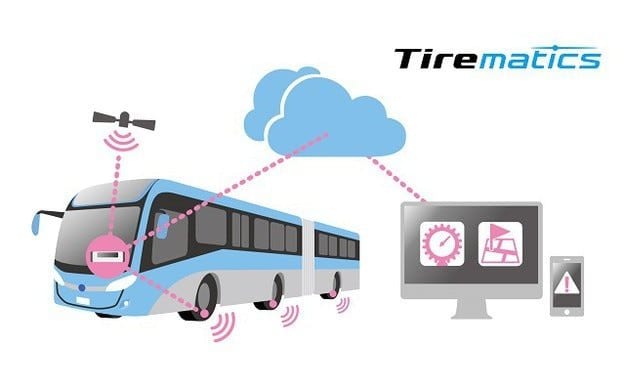
Тест драйв Bridgestone раскрывает преимущества Tirematics

Снижение затрат на обслуживание, расхода топлива и количества аварий
Bridgestone продемонстрировала свою инновационную систему контроля и мониторинга шин Tirematics на выставке IAA 2016 в Ганновере.
Tirematics всички охватывает все решения Bridgestone для автомобильных шин: ИТ-системы, использующие датчики для удаленного мониторинга, передачи и анализа информации в реальном времени, например, давления и температуры в шинах и автобусах.
Решение Tirematics для автопарков обеспечивает добавленную стоимость для операторов автопарков за счет упреждающего подхода к техническому обслуживанию шин до возникновения серьезных проблем, помогая избежать аварийных остановок и дорожно-транспортных происшествий при оптимизации срока службы автопарка. резина и приводит к снижению расхода топлива.
«Решение Bridgestone под названием Tirematics является практичным, экономичным, предназначенным для автопарков и в то же время вносит значительный вклад в улучшение характеристик шин, экономии топлива и предотвращения несчастных случаев», — сказал Нил Первис, генеральный менеджер подразделения бизнес-систем решений в Bridgestone Europe.
Система контроля давления в шинах (система TPMS) работает с 2013 года.
Bridgestone предлагает услуги на основе системы TPMS в рамках программы технического обслуживания автопарка с 2013 года с помощью системы «датчики и ворота», представленной на Ганноверском автосалоне в 2016 году.
Каждый раз, когда автомобиль пересекает барьер, специальные датчики на шинах отправляют информацию о своем давлении на сервер автопарка Bridgestone по сети GSM. Давление в шинах проверяется в реальном времени, и если оно выходит за установленные пределы, автопарку и поставщику услуг автоматически отправляется электронное письмо, чтобы можно было немедленно принять меры. Уведомления также можно создавать автоматически. В настоящее время через этот сервер отслеживается более 100 000 шин, при этом ежедневно измеряется более 25 000 шин.
Будущая система Tirematics, которая предоставляет непрерывную информацию в реальном времени
Расширяя существующее шинное решение Tirematics, Bridgestone в настоящее время тестирует систему, которая принесет дополнительные преимущества автопаркам. Помимо давления и температуры, система отправляет на сервер другую важную информацию в долгосрочной перспективе, а не только тогда, когда транспортное средство пересекает барьер. Эта информация позволяет современной системе обработки данных Bridgestone быстрее реагировать на проблемы с давлением, сообщая автопарку и сервисной службе о том, что шина быстро падает. Эта система также использует продвинутые алгоритмы для создания ориентировочного графика технического обслуживания.
Экономическая эффективность для автопарков
Упреждающие оповещения и регулярные отчеты о техническом обслуживании позволяют автопарку и поставщику услуг работать эффективно на оптимальном уровне
В некоторых автопарках зарегистрировано сокращение дорожно-транспортных происшествий, связанных с шинами, на 75%. Кроме того, автопарки потенциально экономят около 0.5% расхода топлива за счет улучшения состояния автопарка.
Bridgestone считает, что Tirematics значительно сократит расходы на техническое обслуживание шин, потому что, отслеживая информацию о шинах дистанционно, система избавляет от необходимости проверять давление в шинах вручную. Более эффективное техническое обслуживание впоследствии позволит использовать шины дольше и безопаснее, уменьшая количество преждевременно выброшенных шин и общее количество использованных. С решениями Bridgestone Tirematics операторы автопарков могут рассчитывать на дальнейшее снижение затрат за счет более эффективного внедрения.
«В дополнение к преимуществам сокращения затрат на техническое обслуживание шин и снижения аварийных расходов, Bridgestone также тестирует современные приложения. В сочетании с информацией о транспортных средствах они могут быть полезны для автопарка, позволяют выбрать наиболее подходящие шины для работы и позволяют нам предоставлять желаемый сервис, что приводит к увеличению срока службы транспортного средства ». — объясняет Нил Первис.
